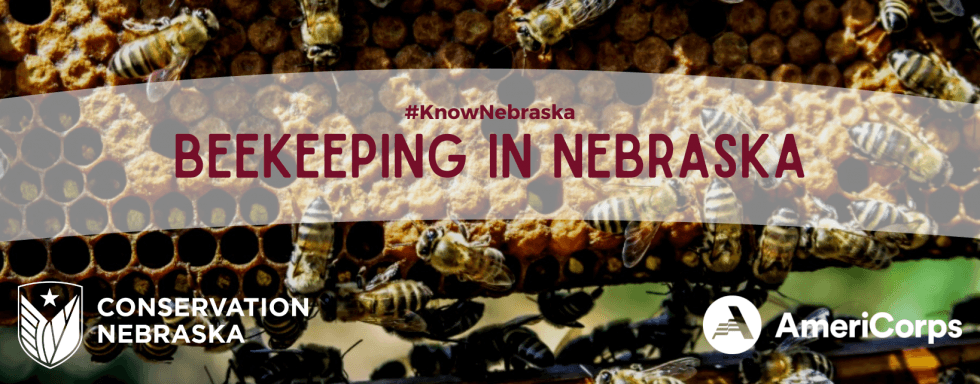
Beekeeping is a practice which has existed for thousands of years. It is thought that Egyptians were the first practitioners of beekeeping, starting the practice around 10,000 years ago; where they would utilize hollowed-out tree stumps to mimic the natural habitats of bees. Today, beekeepers have taken these historical methods and perfected them, raising bees in a mutually beneficial relationship. Bees are vital pollinators, and beekeeping provides habitat and protection for the hive, while also providing you and your community with local honey and pollination.
Basics of Beekeeping
Beekeeping, also called apiculture, is the practice of maintaining a hive of bees and collecting their honey, beeswax, propolis, bee pollen, royal jelly, and bee venom. Honey bees are typically kept due to their honey production, but mason bees can also be kept. Beekeeping also involves caring for the hive’s health. Typically, bees are housed in a man-made beehive. Apiarists, or beekeepers, are the main caretakers of the hive.
Beekeeping typically requires specialized clothing and equipment, in addition to a beehive. Several different types of beehives can be used for keeping bees.
Choosing a hive depends mainly on the beekeeper’s preference. How you build or assemble your hive affects how the bees behave, determining how the comb is built by the bees, and the level of disruption to the bees. The most common three are Langstroth hives, Top Bar hives, and Warre hives.
Langstroth Hive: Langstroth Hives are what most people picture when they picture beekeeping. They consist of boxes which are stacked on top of each other, and a roof with ventilation holes is placed on top. This type of hive is used because it allows honeycomb to be reused after you extract the honey. It is preferred by most beekeepers, due to its maximization of honey production; however, it can be a bit clunky and intrusive to the hive.
Top Bar Hive: Top Bar hives are the most commonly used hives worldwide. The design consists of a frameless wooden trough, with a hinge roof and little bars, which allow for bees to build downwards. This type of hive is recommended for people who are looking for something inexpensive and easy to manage; it is ideal for people with disabilities or mobility issues, as well. With this hive, however, bees must rebuild their comb each time that honey is harvested. [Nebraska’s Apiary Act requires hives to have removable frames.]
Warré Hive: (pronounced Wahr-ay) Warré hives are a type of hive that use boxes (similar to a Langstroth hive) that stack on top of each other, but rather than using frames, they use top bars (like the Top Bar hive) as the attachment point for the bees to build their comb. Their appeal is the minimal inspection required by the keeper. [Nebraska’s Apiary Act requires hives to have removable frames.]
Other Habitats (solitary bees): Although honey bees are the most commonly kept bees, other bee species, such as mason bees, are another commonly kept species. A bee house, also called a bee hotel or a bug house, mimics their natural habitat. It consists of tubes made from bamboo or another similarly sturdy reed, or logs with holes drilled into them. The tubes leave space for solitary bees to live, store food, and lay eggs. The house should be placed facing south, and out of the wind, to allow the bees to be protected and warm during the winter.
Residential Beekeeping
While many people hear “beekeeping” and picture a large-scale operation in a remote area, the truth is that, if it is allowed in your neighborhood or city, people living in suburbia or even in the city could potentially keep bees. With more than 73% of Nebraska’s population living in urban areas, there is a lot of potential for residential beekeeping, especially in suburban areas of the state.
Want some general tips on keeping bees in the suburbs or in the city? Check out this website for more info.
Types of Nebraska Bees
The honeybee is Nebraska’s state insect as of 1975. Nearly 33% of all the food Americans eat is directly or indirectly affected by honeybee pollination, and Nebraska’s role as an agricultural powerhouse puts high importance on the existence of these pollinators. However, honey bees aren’t native to Nebraska. There are 20 native bumblebee species alone, and there are nearly 4,000 native bees across the US. Though this is a list of bees commonly found in Nebraska, it’s good to keep in mind that insects do not follow state borders. Typically, honey bees are favored by beekeepers; however, they are not native to North America. Most native bees are solitary, and they nest in either cavities (meaning holes, reeds, or wood), or on the ground (in tree trunks, in the soil, and in humus (pronounced hyoo-muhs, meaning a layer of natural plant and animal debris)).
State Regulations
Every state has regulations regarding the keeping of bees. Nebraska’s Apiary Act is the piece of legislation which monitors bee-keeping state-wide.
The Nebraska Department of Agriculture conducts inspections of hives when a Nebraska beekeeper requests a Bee Health Certificate for shipping their hives interstate. Requests for a Health Certificate and inspection should be sent to the NDA State Entomologist at agr.plant@nebraska.gov.
City Regulations
If you are looking to keep bees in an urban area, you will need to specifically identify any municipal regulations, or even regulations for your neighborhood, regarding beekeeping. Contacting your local city hall officials and reading your city’s code of ordinances will help you determine the legality of beekeeping in your city. Be sure to also contact any homeowner’s or neighborhood association before building a beekeeping structure.
Resources
Interested in learning more about beekeeping, or even getting started yourself? Check out these resources below!
Nebraska Groups and Resources:
(Omaha) Here is an online application to get an apiarist permit.
Nebraska Beekeeper’s Association
Great Plains Master Beekeeping
Great Plains Master Beekeeping – FAQ
Finding an Apiary in Nebraska
General:
Hives:
Choosing Your Hive – Farmer’s Almanac
Building a Solitary Bee House – Farmer’s Almanac
Honey:

